Unbounded by traditional ground infrastructure, satellite internet delivers broadband internet to places where access has been unreliable or completely unavailable. All that is needed is a small satellite dish to receive the signal and pass the bandwidth on to your router. A new space race is on and this time it is all about the internet.
Space based internet systems have been in use since last many years, facilitated by geostationary satellites at a staggering 35,786km height above the equator that zip at about 11,000km per hour. Signals beamed from the satellites cover about one-third of the Earth’s surface; hence three to four satellites can cover the entire planet.
However, a significant time lag, called latency, of about 600 milliseconds occurs between seeking the data and receiving it. Satellite internet using lower Earth orbit (LEO) satellites reduces the latency to 20-30 milliseconds, which is close to that of terrestrial systems.
To go around the Earth every few hours and balance the effect of gravity, the speed of LEO satellites should be more than double the speed of geostationary satellites, as a result their visibility at any location is reduced and many satellites are needed to cover the complete surface of Earth. Starlink is expected to deploy as many as 42,000 satellites at altitudes of 350km to 1,200km.
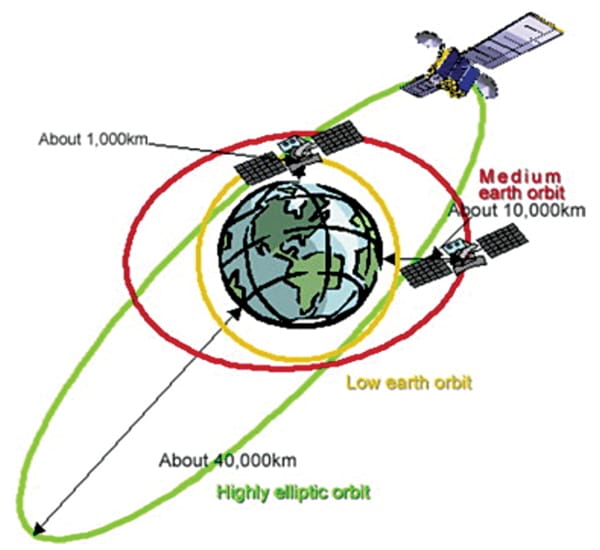
The satellite internet provides consistent signals with high speed and low latency to preclude annoyances, such as dropped calls and lost or delayed signals. Satellite internet is most suitable for areas where it is not feasible or viable to lay cables or set up transmission towers due to inaccessible terrain and high costs.
How satellite internet works
Satellite internet connections are provided by an array of interlinked small sized satellites moving in LEO. This array beams the internet signals down to transreceivers located on ground.
The signals are received by a dish antenna having an unobstructed access to the sky, installed in the premises of the user. When powered up using an electric connection, the self-pointing dish antenna scans the sky and locks onto the nearest overhead satellite, seamlessly maintaining the connection as each new satellite comes into view and the previous one fades beyond the horizon.
The user is connected to a ground station, called gateway (see box), located within about 800km to exchange data with the satellites. The user device is connected to the dish antenna through a modem-cum-router, called a user access terminal (UT).
The user’s internet data request passes from the UT to the dish antenna and the dish antenna transmits the request to the satellite that beams it to gateway. The requested internet data is transmitted from the gateway to the satellite, and thereafter from satellite to the dish antenna, down to the UT, and finally onto the user device.
Advantages of satellite internet
Remote area access and high range are two major benefits, since satellite internet provides global coverage—covering even the remote areas without compromising on the quality of signal. It can provide internet access to air space, in flight as well as on board ships and liners.
The system also provides a better security system, being a private network. An efficient encrypted satellite network is more secure than the terrestrial networks used by governments, defence, and other departments.
While terrestrial network systems involve numerous on-ground equipment prone to damage in cases of any disruptions or disasters, satellite internet is more resilient given its much less on-ground equipment. The satellite based internet service proves to be more cost-effective when used on a large scale, since it has lower set-up cost than the terrestrial networks that involve higher investments.
Disadvantages of satellite internet
While satellite internet has certain advantages, it also comes with certain drawbacks.
Limited speed is a major disadvantage since, as per the current technology, the speed is constrained and lies in the range of 50 to 150Mbps.
Weather related disturbances affect the signal path of satellite networks more vis-à-vis terrestrial networks. In case of rain, storms, and strong winds, the signal could get deteriorated with the chances of the internet being completely interrupted.
Also, high winds could cause physical damage to the dish. Satellite signals are more likely to get attenuated due to obstructions such as tree branches and buildings that come in the path between the dish antenna and the satellite.
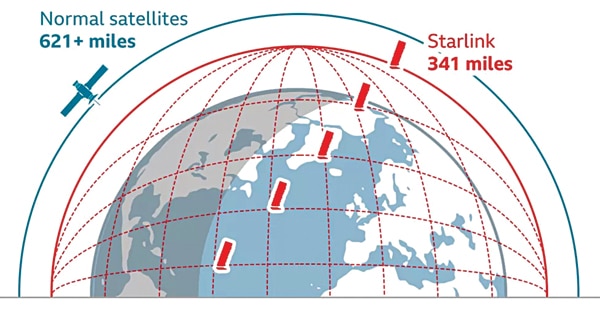
The worldwide competition
Several companies that were providing internet connections using geosynchronous satellites started going bankrupt burdened by the expenses involved in launching the satellites and operating and maintaining the systems. Complex electronics was involved in the systems and there was a slump in market demand due to limited bandwidth, high latency, and prices.
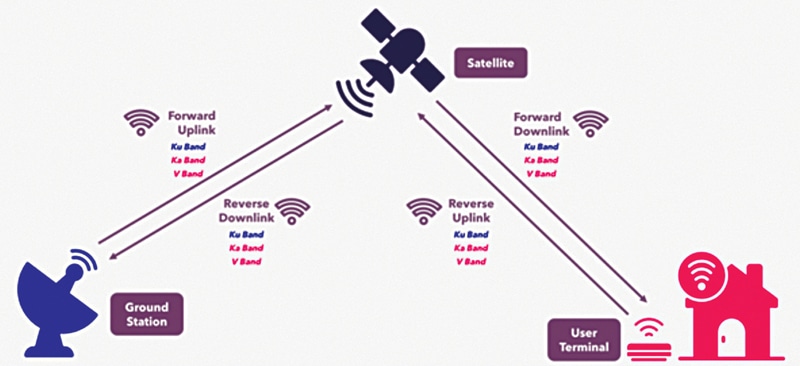
It was in the 2010s that the organisations like Starlink, OneWeb, SpaceX, Amazon, Samsung, Boeing, Roscosmos, and Hongwan started developing internet services using LEO satellites. Starlink was the first to launch LEO satellites in 2019 and provide beta services in 2020. Later, OneWeb, SES, Eutelsat, and Hispasat followed their footsteps.
SpaceX Starlink
SpaceX started the project Starlink in 2015 in the USA with the aim of making available satellite broadband internet services using a network of thousands of interlinked desk-sized satellites in low Earth orbit about 550km above Earth. Each satellite weighs about 250kg and SpaceX plans to deploy 42,000 satellites over a period to provide worldwide internet coverage using the Ka and Ku frequency bands.
According to Jonathan McDowell, an astrophysicist and expert tracker of spaceflight activity, currently 3,858 Starlink satellites are in orbit making available services in 32 countries. Starlink is experimenting with lasers to enable satellites to talk to each other directly at the speed of light (faster than the fibre-optic cables), enabling the users to communicate directly with the satellites.
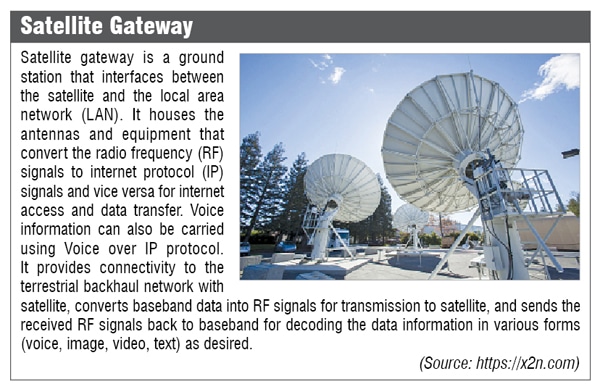
OneWeb
OneWeb, backed by the British government, Bharti Enterprises, Eutelsat, SoftBank, Hughes Networks, and Hanwha, is planning to launch a total of 648 satellites to provide internet services with a download speed of 165Mbps, upload speed of 30Mbps, and latency of 45 milliseconds in regions located above 50 degrees north latitude, which include Alaska, Canada, Greenland, UK, and Northern Europe.
The Indian Space Research Organisation (ISRO) is set to launch 36 OneWeb satellites from the Satish Dhawan Space Centre, Sriharikota, adding to the existing constellation of 582 satellites to enable OneWeb to launch services in India. By the end of the year, OneWeb plans to launch the remaining satellites to provide services across the globe.
Viasat
Viasat operates ViaSat-1, WildBlue1, Anik-F2, and ViaSat-2, which are much larger than the Starlink satellites and operate at a higher orbit, providing services to about 590,000 US subscribers. Presently, it offers a download speed ranging from 12Mbps to 100 Mbps, which is expected to increase with the next satellite Viasat-3 (scheduled to be launched on April 18, 2023).
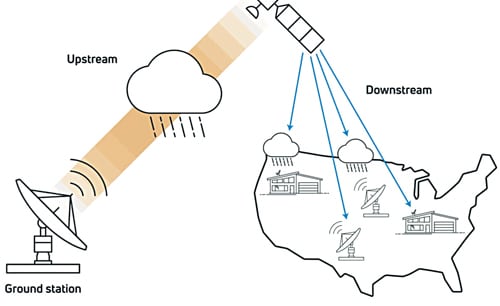
Telesat
Currently, Telesat—a Canadian company, is providing internet services to business houses using 15 geostationary satellites. It is planning to launch a new constellation, Lightspeed, consisting of 1,600 LEO satellites to provide satellite internet services.
The first group of satellites is scheduled to be launched in 2023 with the availability of the connections expected in 2024. Telesat is planning to provide speeds of the order of GBs and latency at par with fibre networks.
Geespace
The Geely Technology Group formed Geespace in 2018 for developing, launching, and operating a constellation, Geely Future Mobility, consisting of 240 LEO satellites to provide high-speed internet services and support highly precise navigation and cloud computing capabilities across China. In June 2022, Geespace launched the first batch of nine satellites.
The first phase to place 72 satellites in orbit is planned to be completed by 2025. Geely Technology Group is the first privately owned enterprise in China to develop, produce, and operate low-orbit commercial satellites.
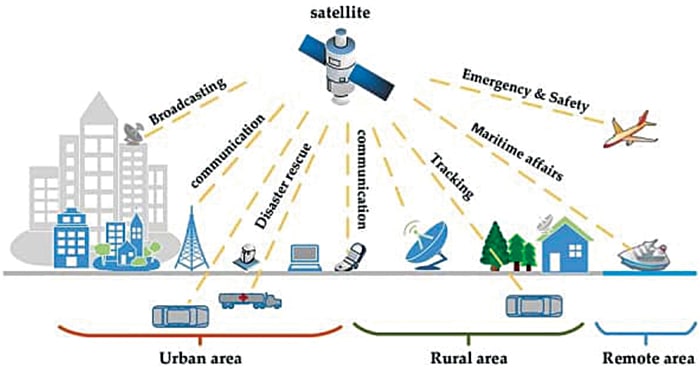
Amazon
Amazon is planning to invest more than $10 billion to scale up Project Kuiper and Amazon Web Services (AWS) to leverage their global logistics and operations, as well as provide satellite services commercially. Under these projects, the United Launch Alliance, Arianespace, and Blue Origin together have launched 3,236 satellites into LEO.
In 2020, Amazon unveiled a customer terminal capable of reaching speeds of 400 Mbps. In future, Amazon plans to become the closest rival to Starlink.
The European Union
The European Union (EU) approved a Euro 6 billion ($6.11 billion) project in February 2022 to compete with Starlink to provide services in Europe. Airbus, SES, and Eutelsat have been commissioned to conduct a technical study for the project for the approval of the EU member states.
The Indian scenario
Currently, internet services are not available to nearly 75% of rural India due to lack of cellular or fibre connectivity. India, therefore, is a key emerging market providing $1 billion near-term annual business opportunity ($4.7 billion by 2025 as per E&Y estimates).
However, there are many challenges, such as the very high costs of developing the systems and launching of satellites—nearly $20 (`1,650) per GB, which is about ten times the global average. It is tedious to lease the foreign satellites capacity as the process involves obtaining several approvals, including a go-ahead from the Department of Space. The user access terminals are not available indigenously and the imported terminals are costly, taking the base model cost to nearly $1,000.
However, the private sector is constantly making efforts to launch the services and there is intense competition between Jio, Bharti-backed OneWeb, Nelco (a Tata group satcom company), Canada’s Telesat, SpaceX, and Amazon. The Department of Telecom (DoT) has asked the Telecom Regulatory Authority of India (TRAI) to allocate 27.5-28.5GHz band, 71-76GHz and 81-86GHz, E band and 57-64GHz, and V band for satellite internet services.
Bharti Airtel’s OneWeb
Hughes Communications India Private Ltd (HCIPL), a joint venture between Bharti Airtel’s OneWeb and Hughes, has received the national long distance (NLD) and global mobile personal communications by satellite (GMPCS) licences for delivering the services in India. The remaining regulatory approvals are expected to become available soon to commence the pilot services. To provide the services in India, OneWeb plans to launch 36 satellites in cooperation with ISRO’s NewSpace India Ltd (NSIL) from the Sriharikota centre.

Reliance Jio
Jio Satellite Communication Ltd (JSCL) has a multi-year capacity purchase agreement with Luxembourg’s SES, which provides satellite broadband services using geostationary and medium Earth orbit (MEO) satellite constellations. JSCL will be offering satellite broadband services to industries, aviation, and maritime users; and mobile backhaul (MBH) services to mobile networks to connect cell site air interfaces to wireline networks connected to data centres that host the content and applications accessed by mobile users, both human and machine. JSCL has received the licence for GMPCS services.
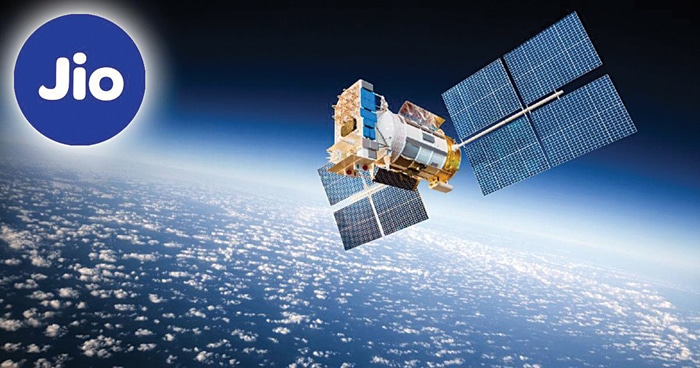
The Tata group
Nelco, a company of the Tata group, is partnering with Canadian satellite player Telesat to form a joint venture, Tata-Telesat, to launch the satellite broadband services, including the in-flight internet service on domestic and international flights under the brand ‘Lightspeed’ around 2024.
Amazon
Amazon has initiated efforts to bring high-speed satellite internet services to India using Project Kuiper satellite constellation and has approached the government to obtain the necessary regulatory approvals.
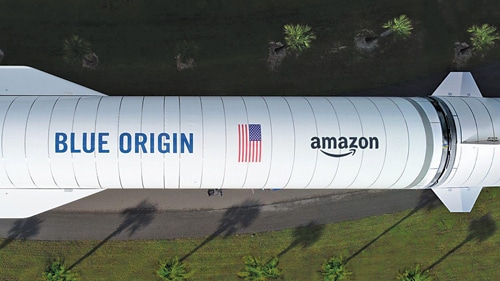
SpaceX’s Starlink
The Indian launch of Starlink service, originally planned in 2022, remains uncertain as the DoT and the Telecom Regulator have asked the Indian arm of the company not to take pre-bookings before getting the licence or authorisation from them.
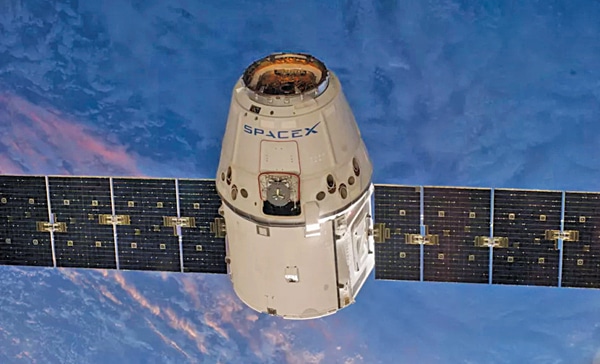
Satellite internet for the US Armed Forces
When terrestrial internet connections are disabled or blocked by enemy action, satellite internet provides an alternate for effective support. Recognising the importance, the US Space Development Agency (SDA) has signed a dual-use contract with Starlink to develop a military version to provide the US military capability to dominate the cyberspace.
Starlink has started modifying the systems to make them more ruggedised, improve their compatibility with the current satcom equipment, and equip the satellites with devices to provide combat capabilities for reconnaissance, remote sensing, communications relay, navigation, and positioning. As part of the project, Starlink has located some of the launch sites in the US Air Force bases.
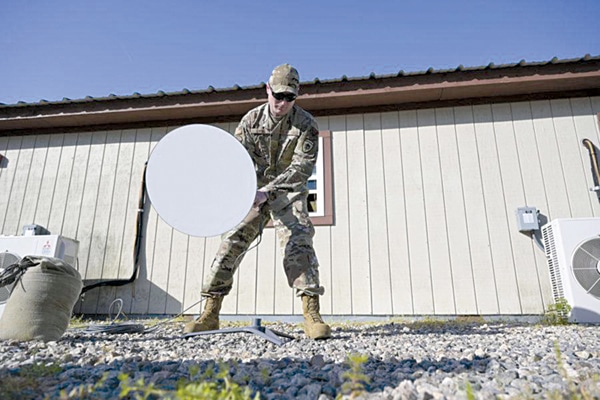
The first tranche of satellites forming part of the Space Force’s National Defense Space Architecture (NDSA) has been launched with capabilities for data transport, battle management, missile tracking, weapons targeting, navigation, deterrence, and ground support. The system has been successfully connected to a variety of air and terrestrial assets of the US to establish encrypted interconnections between the satellites and the US Air Force fighter planes.
Satellite internet for the Indian Army
The Indian Army has been studying the ongoing cyber and electromagnetic aspect of the Russia-Ukraine war and the advancements made by the adversaries in the field. The study has established the need for having a tactical high-speed satellite internet to support military operations and communications, especially in the remote areas.
Currently, the Indian Army does not have a dedicated satellite for this purpose. However, the Defence Acquisition Council has cleared a proposal for an advanced satellite, GSAT-7B, which is being built by ISRO and is likely to be available by December 2025.
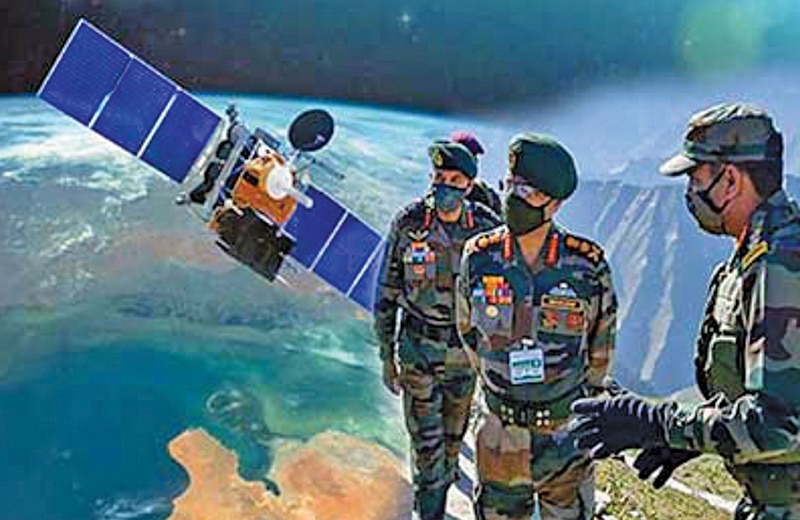
Using the existing infrastructure, the Indian Army has activated satellite-based internet service on Siachen Glacier at 5,810 metres—the world’s highest battlefield. Bharat Broadband Network Limited (BBNL) has a special purpose vehicle (SPV) set up by the government to create national optical fibre network pan India to cover around 250,000 gram panchayats spread over 641 districts, the borders, and the other operational areas for providing the net connectivity.
BBNL is acquiring four satellite gateways with two high-powered satellites to provide inter-BharatNet pan India. In addition, a few private companies are providing satellite based internet connectivity to the Indian Army in sensitive places along the border. For example, Hughes Communications India is providing satellite based connectivity along the China border, including the Galwan region.
Role during Russia-Ukraine war
On February 26, 2022, two days after the Russian invasion, the Ukrainian army suffered heavy losses due to signal towers’ and underground communication cables’ damage, thus disrupting the internet and phone connections. Ukraine requested SpaceX to provide Starlink terminals. SpaceX deployed 10,000 satellite terminals to restore the destroyed internet connections of military bases, hospitals, and homes.
The Ukraine army has deployed the terminals for artillery coordination, supporting combat communication, and controlling the UAVs. There have been reports of the terminals aiding the Ukrainian armed forces in making precision strikes against Russian tanks and positions, and to monitor and coordinate UAVs to fire anti-tank weapons with targeted precision. Subsequently, when the Russian forces managed to jam the terminals, Starlink quickly updated the software to restore the services.
The Chinese concerns
Military observers all over the world, particularly in China, are increasingly getting concerned about the US using the satellite internet for dominance in space. They have contended that the orbital space should not become the exclusive privilege of the US and no single country should have complete dominance in space.
China has complained to the UN Space Committee that the US is using a civil cloak to provide seamless reconnaissance and surveillance services for their armed forces. China has expressed the fear that it is a matter of deep concern that the Starlink is increasing the satellites from 12,000 to 42,000.
The system supposedly developed for civilian use with the US funding and infrastructural support could be reconfigured quickly for defence use. As an example, China has said that their Tiangong space station had two near-misses with Starlink satellites. As a countermeasure, China is deliberating developing capabilities to disable and may be even destroy Starlink internet satellites.

Risks and challenges ahead
Geostationary satellites can cover huge areas with a single satellite, whereas the LEO satellites need to be deployed in very large numbers to provide the coverage for uninterrupted continuous transmission. With thousands of satellites being launched into the lower orbit of space, there is growing concern among astronomers, scientists, and space agencies.
The issues flagged are that they ruin images or spectroscopic measurements as they streak through the telescope’s field of view, making it difficult to observe the other space objects and detect their signals. They create a significant number of space debris, increasing the risk of collisions. They increase light pollution as the light reflected from the satellites could interfere with and be mistaken for the light coming from heavenly bodies. And the optical and radio waves’ brightness severely affects the scientific observations.

For example, in 2019, the Blanco telescope, Cerro Tololo Inter-American Observatory (CTIO), reported strong signal loss and appearance of 19 white lines on the photo-shot of Dark Energy Camera (DECam)—a state-of-the-art camera for observing galaxies and recording motion—due to transit of a Starlink satellite train. To obviate their fears, Starlink has taken several steps, such as experimental coating trial, but the satellites were found to be still too bright. Thereafter, SpaceX started providing sunshades to reduce the brightness by about 30%.
Starlink is now providing satellite tracking data to astronomers and on-demand orientation adjustment for effective coordination. In addition, The International Astronomical Union (IAU) has established a centre for developing software tools and the relevant technologies to deal with the adverse effects of satellite constellations, and has set up a website to enable astronomers to track the satellites.
Space debris
With the continuing deployment of thousands of satellites into space, the space junk is going to multiply, increasing the possibility of catastrophic satellite collisions. Debris in space can be a threat to satellites and space stations in orbit, as well as future manned missions to space.
Also, the orbiting satellites eventually get pulled out of the orbit by the natural causes, such as the atmospheric drag experienced. The international standards require satellites to re-enter Earth’s atmosphere within 25 years of mission completion, if they are in the LEO region. However, scientists and the experts want the 25-year time to be shortened.
Also, the question remains as to what happens if a satellite dies early. Starlink is considering de-orbiting satellites nearing the end of their useful lives by propelling them to a ‘disposal orbit’ for orderly re-entering the Earth’s atmosphere within one year.

OneWeb maintains that their satellite networks are designed to avoid collisions with space stations, and they actively and regularly screen for conjunctions between their satellites and other space objects, catalogued by the Joint Space Operations Center (JSpOC). However, to obviate the possibility of a satellite hitting something else to create debris, they maintain that the probability of such collisions is compliant with NASA’s Technical Standard (probability to be <0.01).
Notwithstanding all such assurances, the European Space Agency (ESA), for the first time ever, had to perform a “collision avoidance manoeuvre” in September 2022 to protect one of its live satellites from colliding with a “mega constellation.” 49 Starlink satellites launched from NASA’s Kennedy Space Centre, Florida, suffered an early death due to a geomagnetic storm, pushing up the density of the atmosphere increasing the drag on the satellites.
Endpoint
Space based internet has been in use for several years using satellites in geostationary orbit. However, the use has been limited due to the huge cost involved and high latency.
The present-day satellite internet using satellites in LEO region involves lower latency and costs, allowing wider applications and usage. A constellation of many satellites is required to provide continuous global coverage.
Starlink operated by SpaceX has become a space “juggernaut.” As of now, it has 3,858 satellites in low Earth orbit, with a possible future extension to 42,000 satellites, providing coverage to more than one million subscribers in over 50 countries. Starlink controls manufacturing, rocket launching, ground station construction and satellite operations.
In India, several players are active in providing seamless connectivity, and the satellite internet segment has become a new battleground for satellite internet operators and communications service providers. The government is yet to come out with the spacecom policy of India to lay down the rules and spectrum bands.

There are many challenges facing the satellite internet service providers, such as constraints in making available thousands of satellites simultaneously; maintaining the satellites in correct position in space; network problems caused due to bad weather conditions, such as heavy rainfall, thunder, and storms resulting in slower speeds or outages; and solving the problem of increased space debris along with addressing other concerns of astronomers.
Despite the challenges, satellite internet is moving ahead at full force, with rapid new advancements and applications. As of now, the satellite based internet services are complimenting the existing cable based infrastructure. It will be interesting to see if in the future this technology can improve and bring down the several limitations.
Dr Deepak Halan, the author, is currently Associate Professor with Jaipuria Institute of Management, Noida (UP)






